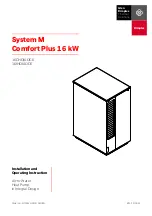
134
UK
3.2 Running time of engines
3.3 Checking the voltage
3.4 Intensity control
Quantifies the running time of the motors since their first
use (TOTAL), the number of starts and the maximum
operating time (PMAX).
Controls the voltage of the electrical network
Controls the power consumption of the motors. To be
checked during engine maintenance, for example.
P1
P2
➤
➤
➤
➤
10:47:10
AC
JOURNAL
Liste Alarme
Temps pompes
Graph U
Graph I1
Graph I2
››
› ›
P1
P2
➤
➤
➤
➤
10:47:10
AC
JOURNAL
Liste Alarme
Temps pompes
Graph U
Graph I1
Graph I2
››
› ›
P1
P2
➤
➤
➤
➤
10:47:10
AC
JOURNAL
Liste Alarme
Temps pompes
Graph U
Graph I1
Graph I2
››
› ›
I:0.0A
Min:0.0A
Max:6A
10:48:09
AC
10:47:35
AC
P1 MAX:17 s
Nbr demarrage: 9521
TOTAL: 38 h 45 mn 6 s
P2 MAX: 15 s
Nbr demarrage: 9520
TOTAL: 36 h 16 mn 38 s
U:233V
Max:240V
10:47:49
AC
6.7 Option of connection to an external alarm
Option of externalising the alarm signal (depending on the model). Dry contact
(no voltage)
NO (normally open).
The lugs can be connected to a BMS (Building Management System) system or to a live system (max. 250 V / 16 A.).
This contact closes as soon as the station is in alarm mode (except in the case of area alarm) and remains closed as long as the alarm sounds.
6.8 Remote wireless alarm box (included with SANIFOS
®
500)
The alarm box must be installed indoors, in a damp-free location and close to an
electrical outlet.
Technical characteristics of the alarm device
HF alarm unit 868 MHz (radio)
Unobstructed range: 100 m
Audio and visual information
Protection index: IP20
Max external alarm
250 V / 16 A
Dry contact NO
Red LED:
General alarm
Green LED:
Area alarm
Yellow LED:
HF transmission alarm
















































